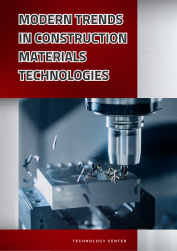Technological aspects of computer control of the secondary condensation complex of ammonia production under uncertainty
Keywords:
Alloys, constucrion, materials, technologyAbstract
In this work, the rational compositions of the chemical composition of established and substantiated chromium-manganese alloys in the following ranges were: С = 2.6–3.0 %; Cr = 10.0–20.0 %; Mn = 10.0–15.0 %; Ni = 0.5–1.7 %; Si ≤ 1.3 %; V ≤ 0.3 %; Cu ≤ 0.3 %.
It has been determined that an additional increase in the complex of properties of chromium-manganese alloys can be achieved by the additional introduction of molybdenum, titanium, barium and calcium in small amounts.
The peculiarities of the formation of the structure, phase composition and properties of the investigated chromium-manganese alloys in the cast state were. The change in the temperature intervals of the beginning and end of melting/crystallisation of alloys with different alloying systems was determined by thermal analysis. A comparative analysis of the melting/crystallisation temperature intervals revealed that the developed chromium-manganese alloys are characterised by lower energy consumption of the production process, and, therefore, are more technologically advanced in terms of achieving the required superheat temperature, subsequent casting into moulds and crystallisation.
According to the results of comparative tests for friction wear (temperature up to 950 °C, load 500 N) and abrasive wear of chromium-manganese alloys with traditional analogue alloys in the cast state, it was found that the experimental material containing 3.10 % C 13.10 % Cr; 15.75 % Mn; 1.15 % Ni; 0.90 % Si; 0.25 % V and 0.15 % Cu, has higher wear resistance in contrast to high-chromium cast iron 300Х32Н3ФЛ and alloy chromium-nickel "nikorin" (36.0–38.0 % Cr; 57.0–59.0 % Ni).
The results of the study indicate that further development of effective heat treatment regimes for the proposed chromium-manganese alloys will increase the operational stability of the piercing mandrels of pipe rolling mills while reducing the material costs of their manufacture. When developing heat treatment regimes, special attention for chromium-manganese alloys, should be paid to obtaining metastable structures that are prone to decomposition and self-reinforcement during operation of finished products.

In press. MODERN TRENDS IN CONSTRUCTION MATERIALS TECHNOLOGIES
Published
Categories
License

This work is licensed under a Creative Commons Attribution-NonCommercial-NoDerivatives 4.0 International License.

